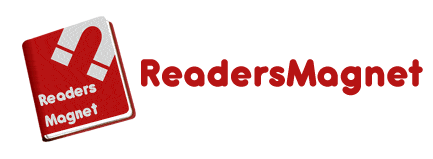Data from the statistics portal Statista reveals global internet users spent 118 minutes a day on social media in 2016, up from 109 minutes a day in the previous year. And as of June 2016, there were around 2.34 billion active social media users worldwide, representing 32% and 68.3% of the world population and number of global internet users, respectively. What do these figures mean for authors like you?
Your potential readers are on social networks, and you have close to two hours a day to impress them with your book or portfolio of books. Influencer marketing agency Mediakix reveals there are 1.13 billion daily active users on Facebook and 140 million on Twitter. The agency did not give out the figures for Pinterest and Tumblr, but both sites rank in social media marketing company Dreamgrow’s top 15 most popular social networking sites. If monthly active users are taken into account, Tumblr has 550 million while Pinterest has 150 million.
How authors could use social media
But how many of those users are readers? What literary genre or niche do they prefer? Are they lovers of prose or poetry, fiction or non-fiction? Bookworms will not hide their reading preferences on social networks, thus making it easy for you to gears your marketing efforts towards your intended audience. Tap the power of social media to reach your potential readers and build a connection.
You might want to start with Facebook as this is the best social network to connect with people or readers. You will find its user interface user-friendly to upload photos, post a status or event (like a reading party or book launch), tag people, and even host a Q&A or live video session.
Facebook is great for engaging with potential readers and humanizing your book marketing efforts. But to maximize this social network, you should create a page (either for your book or your authorship). Your Facebook page will serve as your calling card.
Twitter is the author’s bullhorn. It is the social network to utilize when participating in real-time discussions. Other than Facebook, Twitter is the best place to post images, GIFs, vines (short videos that lasts a few seconds), and polls – and then inspire a conversation around these forms of media.
Though Twitter is great for building reputation and visibility, you will find it a challenge to limit your message to 140 characters and use less than three hashtags. The best strategy here is to choose the best media to highlight your concise message.
Tumblr has the best of both Facebook and Twitter. What you can do on both social networks, you can do on the micro-blogging site, which is geared towards young users with varied interests, including literature. It has multiple post creation features to allow different kinds of posts, an option that should appeal to authors like you.
In Tumblr, you can put up a wordy post and even use lots of hashtags on your posts. It is easy to view multiple images in the micro-blogging site because you view them by a set (photoset). In Facebook, you view one image at a time in an album.
For visual inspiration, Pinterest is the place to go for creative minds. This is where the most beautiful things on the internet are posted. What could you, an author, do with this social network? As your visual pin board, you could use Pinterest to spot new trends that may inspire a new storyline, a setting for your next novel, your protagonist’s home or your antagonist’s dungeon.
Connect with like-minded creators or curators who share common interests or themes and draw them to your creations on your Pinterest profile. When you write a new article, use the most beautiful image you can find or take out a page from your picture book, and share them on your profile.
Your social media strategy should complement your message and media. That should be the best way to attract readers.

This is great! Excellent information! Wish there’d be more articles that are as informative as this one.
Exactly what I’m thinking! This is certainly a great resource for marketing strategists.
I now realize the powerful influence that social media has on both authors and readers. It can make or break an author’s chance to get their works out there!
I 100% agree. I used to think that social media was only for models and influencers, but like you, I now see the value that social media brings.